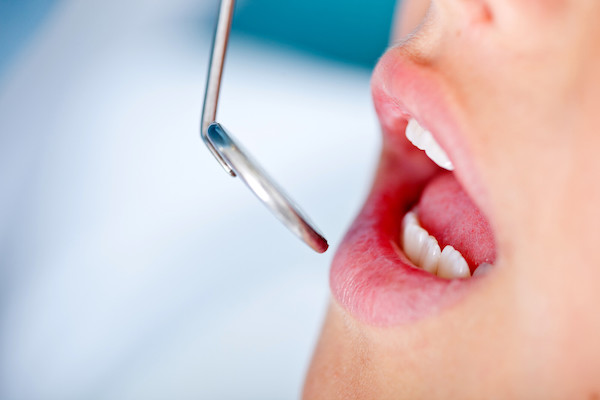
Your child’s teeth are under attack! 14% of children between the ages of 5 and 11 have dental cavities.
You need to take steps right now to protect your child’s teeth, even if your child is a newborn. Ordering pediatric dental care services is one step. Informing yourself about what you can do is another.
What should you do to protect your newborn’s teeth? When and how should you use a toothbrush and toothpaste? How can you make a routine out of caring for baby teeth?
Answer these questions and you can make routine dental care a cinch. Here is your quick guide.
Be Careful With Baby Teeth
You should start caring for your baby’s gums as soon as they are born. You don’t want to use a toothbrush and toothpaste, as they may irritate your baby’s mouth.
You should use a soft washcloth to wipe your baby’s gums two or three times a day. You can wipe them after feedings or before they go to bed. Wiping will remove harmful bacteria and keep debris from sticking to their gums.
Some babies begin teething when they are 6 months old while others begin the process after turning 1. Be patient and continue to clean your child’s gums until their teeth begin to erupt.
Signs of teething include irritability, drooling, and ear pulling. You can relieve your baby’s discomfort by rubbing their gums or using a teething ring.
Transition to a Soft Toothbrush
By the time your child is 3 years old, their primary teeth should have erupted. You can then transition to using a toothbrush to care for their baby teeth.
The toothbrush should have soft bristles that bend slightly as they hit a child’s tooth. The head of the brush should be small, though it should be big enough to cover the entire front or back of a tooth. You should be able to hold the toothbrush with one hand, so find one with a long and wide handle.
You can put toothpaste on the brush, or you can soften the brush with a little warm water. As you’re starting out in baby teeth care, you may want to use only water.
Once your child is used to having a brush in their mouth, you can use toothpaste with fluoride in it. Choosing the right toothpaste for kids means researching different brands and finding one that has the right ingredients and flavors.
You should brush your child’s teeth two times a day for two minutes each time. Be gentle and use circular motions to clean the teeth. Focus your attention on the back molars, as bacteria can cling to the back teeth and gums and create cavities.
Develop a Routine for Tooth Brushing
Try brushing your child’s teeth at the same time every day. Adopting an inconsistent schedule can startle your child when it is time to brush their teeth.
Bring your child into the bathroom and stand behind them. Hold the toothbrush with one hand and hold their chin in your other hand. You can lean their head back or rest their head against your chest to make it easier to hold them still.
Angle the toothbrush so the bristles are pointing toward the gums. A 45-degree angle tends to work fine, but you may need to adjust the angle as you move toward the back teeth.
You can go from left to right or front to back. Once you’re done with the teeth, you can brush your child’s tongue to remove bacteria.
Hold the brush at an angle and scrub toward the front of the mouth, as scrubbing toward the back can make your child gag. Your child can then spit the toothpaste out of their mouth and rinse their mouth with water.
Prevent Cavities
Using a good brushing technique is an important step toward preventing cavities. However, you need to take a few other steps in order to kill harmful bacteria.
After brushing sessions are done, your child can swish a fluoride solution over their teeth. Wait until your child is old enough to control the solution in their mouth and avoid swallowing it.
They can swish two teaspoons of the solution for one minute and then spit it out. They can swish water afterward in order to remove the taste of the solution.
Bacteria feed off of sugar and carbohydrates, so avoid giving your child sugary foods. They can eat fruit, but they should not drink fruit juices and sodas. Do not put sugar or honey on your child’s pacifier or bottle.
Schedule Pediatric Dental Care
Your child can start going to dental appointments when they are 18 months old. They should have a check-up once every six months so their dentist can monitor their progress. Regular appointments also let your child develop a relationship with their dentist and overcome their anxiety.
You can watch the check-up as it takes place and learn about what you should do to care for your child’s teeth. You can also learn about other dental professionals for your child, including oral health therapists.
Take Care of Your Child’s Teeth
Pediatric dental care starts with you. As soon as your child is born, you should protect their gums by rubbing them with a damp towel. Once your child’s teeth have developed, you can use a toothbrush and toothpaste.
Create a comfortable routine for your child. Hold their brush for them and brush each of their teeth, including the ones in the very back. Make tooth brushing part of an anti-cavity strategy that includes regular appointments with the dentist.
Start your child’s dental care journey today. Children’s Dental and Orthodontics serves the Dallas area. Contact us today.
 (214) 453-2565
(214) 453-2565